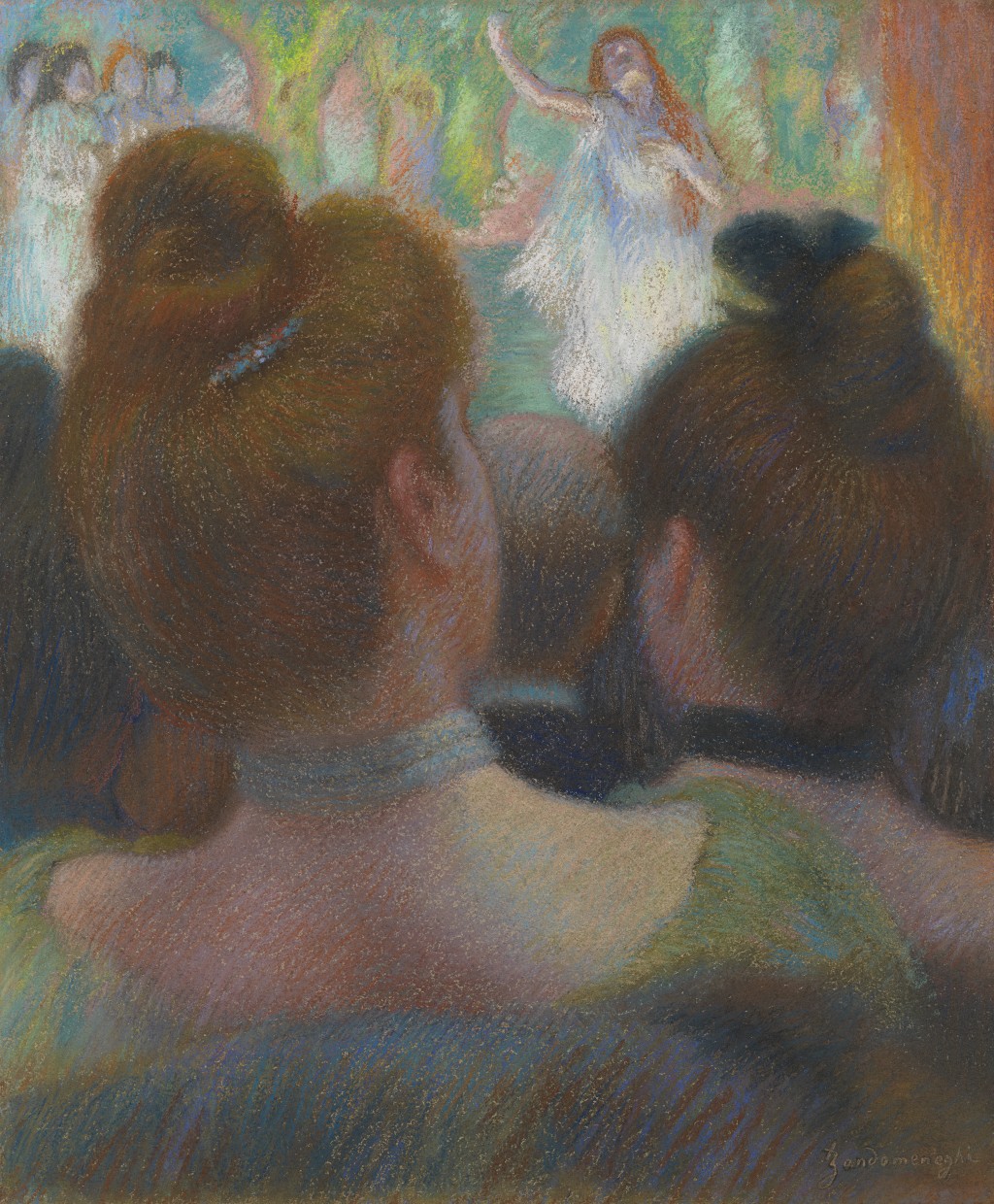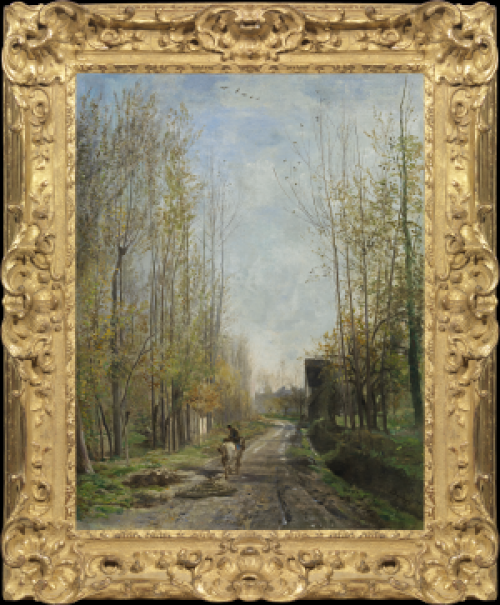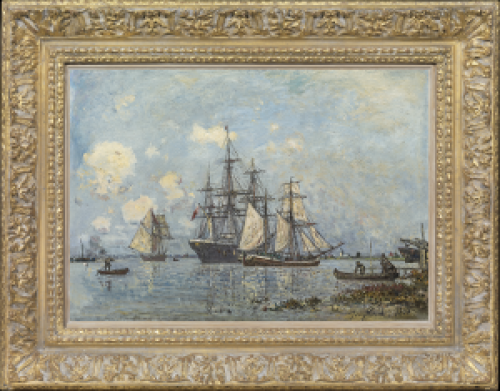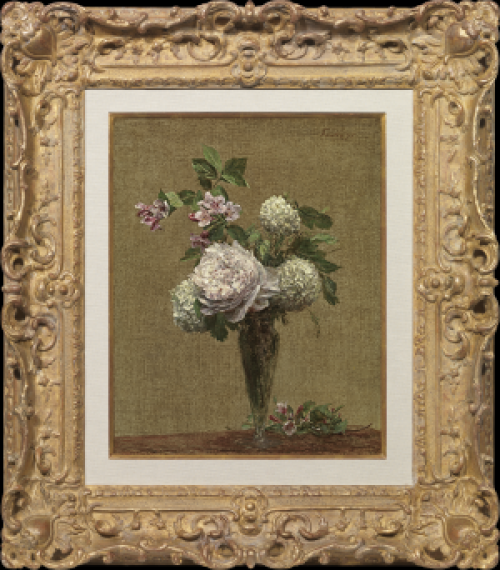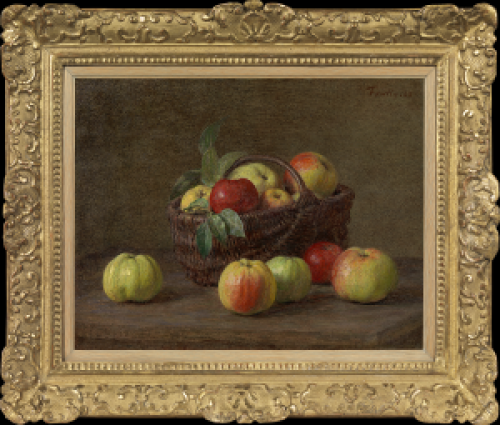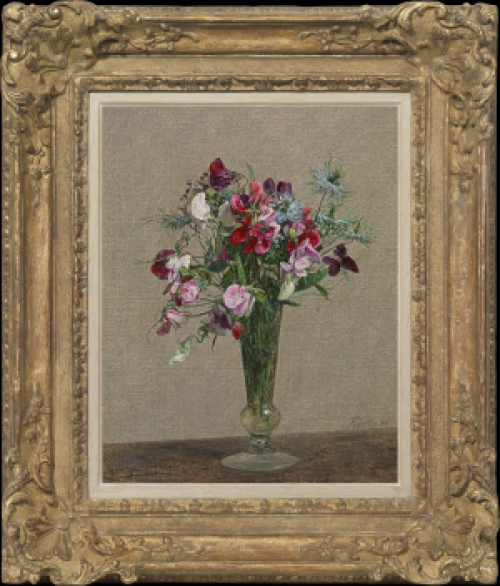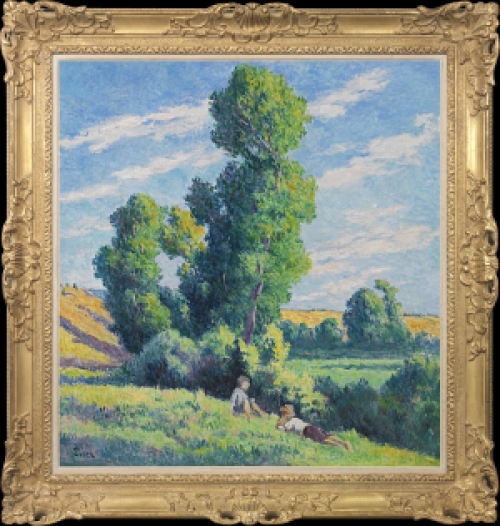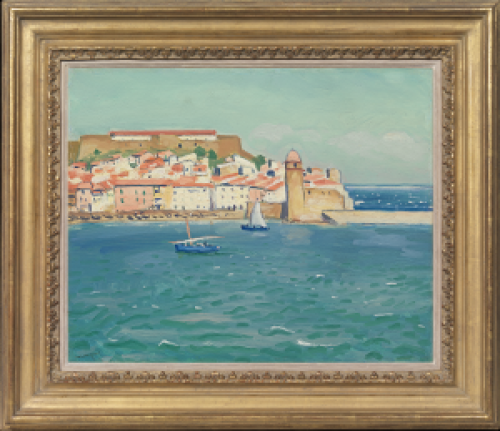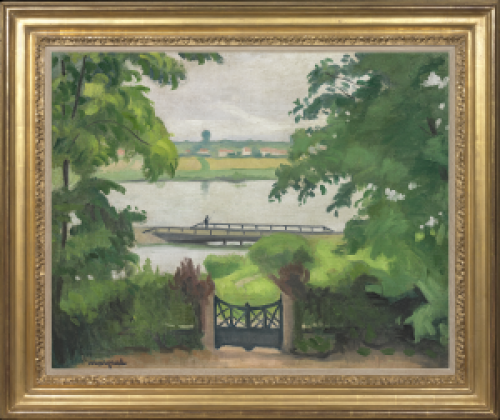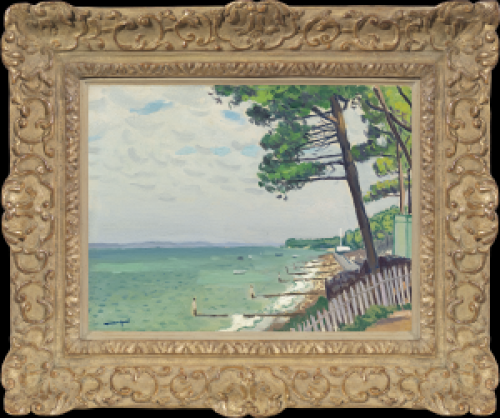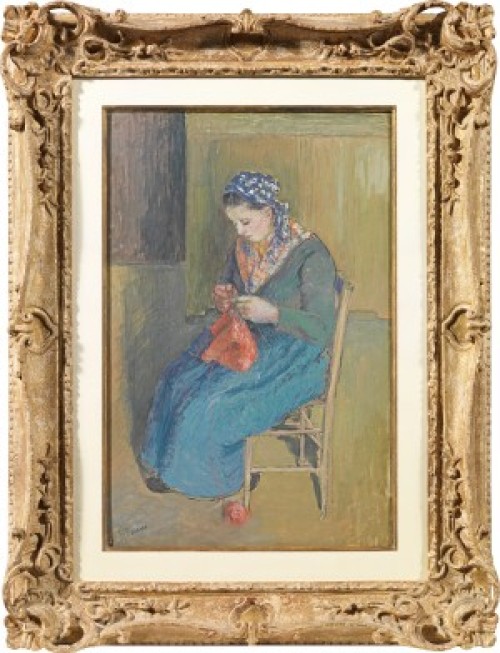FEDERICO ZANDOMENEGHI
Venice 1841 - 1917 Paris
Ref: BS 189
Au théâtre
Signed lower right: Zandomeneghi
Pastel on paper: 18 x 14 in / 45.7 x 35.6 cm
Frame size: 30 x 27 in / 76.2 x 68.6 cm
Painted circa 1900
Provenance:
Durand-Ruel & Cie, Paris, acquired from the artist on 30th November 1900 (inv. no.A451 and 18632);
by descent in the family of Paul Durand-Ruel
Literature:
Enrico Piceni, Zandomeneghi, Milan 1967, no.126, illus.
Enrico Piceni, Zandomeneghi, Milan 1991, no.126, illus.
Fondazione Enrico Piceni, Federico Zandomeneghi Catalogo Generale, Milan 2006, p.308, no.499, illus.
Christopher Lloyd, Impressionist & Post-Impressionist Drawings, London 2019, p.163, illus. in colour
This pastel is recorded in the archives of the Fondazione Enrico Piceni as no.179
Forced to leave his native Venice because of his involvement with freedom campaigns of Giuseppe Garibaldi, Federico Zandomeneghi arrived in Paris in 1874 and stayed there for the rest of his life. Passionate and outspoken, he was drawn into the orbit of Degas and the other artists who met at the Café de la Nouvelle-Athènes. Although they had their disagreements, Degas was probably Zandomeneghi’s closest mentor in Paris. He wrote to a friend after Degas’s funeral: ‘He was the most noble and independent artist of our epoch….I will never forget the great friendship which bound us for many years’[1].
Like Degas, Zandomeneghi made art from the lives of ‘modern urban women’, observed without narrative or moral comment in moments of intimacy or privacy – bathing, chatting with friends, taking tea, glancing in the mirror before they set off for a play or a ball. He became a superb exponent of the pastel medium, also favoured by Degas. Au théâtre is taken from the oblique viewpoint of a patron in the stalls, the two elegant women seen in seductive, mysterious lost profile, intent on the spectacle. This anonymity allows Zandomeneghi to concentrate on shape, colour and the complex play of light: the reciprocal curves of their cheeks and upswept hair, the ribbon chokers at their necks, one light, one dark. The artist draws out all the colours in the shadowed auditorium, stroking lines of pastel in orange and pink, shading into blue and gold, to evoke the curve of the shoulders of the foreground figure. The blue of her chair is echoed in the ribbon at her throat and the jewels in her hair. These demure colours are contrasted with the acidic brightness of the limelight that illuminates the stage, the chief performer with her white dress and flowing red hair and the brilliant greens of the sylvan backdrop. Zandomeneghi employs complementary colours to dazzling effect, juxtaposing orange and green throughout the pastel.
Zandomeneghi made a number of works on the theme of the theatre, including an oil painting of four women in a theatre box, also titled Au théâtre (Istituto Matteucci, Viareggio)[2] and paintings of ballet dancers. The present pastel Au théâtre was bought by Paul Durand-Ruel in 1900 and has descended in his family. Another pastel Au théâtre (private collection[3]) of around the same date, depicting a single female theatregoer from behind with a glimpse of dancers onstage, also passed through the hands of Durand-Ruel. The influential dealer championed Zandomeneghi from the 1890s and in 1893 and 1898 held one-man exhibitions of his work in Paris. He also promoted Zandomeneghi to American collectors, who delighted in his sophisticated figure compositions.
FEDERICO ZANDOMENEGHI
Venice 1841 - 1917 Paris
Federico Zandomeneghi was a painter of realist landscape and genre, whose early career was spent in Florence as an associate of the Macchiaioli, before he moved to Paris and fell under the spell of the Impressionists. The Zandomeneghi family included a number of leading Venetian artists. Federico’s father and uncle, followers of Canova, were the sculptors who created the monument to the great Venetian painter Titian in the Church of Santa Maria Gloriosa dei Frari. This family heritage exerted an influence upon Federico Zandomeneghi, but he was most inspired by colour and thus decided to become a painter rather than a sculptor. He enrolled at the Accademia de Belle Arti in Venice 1856, where he studied under Molmenti and Grigoletti. However, in order to avoid being drafted into the army of the occupying Austro-Hungarian Imperial forces at the age of eighteen, he fled to Pavia where he enrolled in the University.
In 1860 Zandomeneghi took part in Garibaldi’s Expedition of the Thousand to liberate Sicily and was imprisoned when he returned to Venice. His father managed to arrange for Zandomeneghi’s release, but the young Federico was forced to abandon his beloved Venice forever. He settled in Florence in 1862, where he came into contact with the Tuscan Macchiaioli group of painters, who adhered to the principle of plein-air painting, with a particular emphasis on the contrasting effects of light and shadow.
In 1874 Zandomeneghi moved to Paris where he would remain for the rest of his life. A familiar face at the Café de la Nouvelle-Athènes, he frequented the Impressionist circle. Zandomeneghi and Degas formed a particularly intimate though turbulent friendship which would last until their deaths in 1917. In a popular anecdote Degas, notorious for his brittle manner, is reputed to have asked Zandomeneghi to sit for him, ‘as he had nothing better to do’. Zandomeneghi’s retort: ‘one does not speak to a Venetian like that’, reveals not only his immense pride in his native artistic heritage but also that these two curt temperaments, who played such a formative part in late nineteenth century French art, were well matched. ‘Zando’ also became acquainted with Renoir, Pissarro and Sisley. Degas’s insistence encouraged Zandomeneghi to participate in the ground-breaking Impressionist exhibitions of 1879, 1880, 1881 and 1886. The art critic and Decadent novelist Joris Karl Huysmans heralded Zandomeneghi’s talents in a rare moment of warmth: ‘The Independents have found in that conscientious artist, Federico Zandomeneghi, a precious recruit’. The discerning dealer Paul Durand-Ruel championed his art from the 1890s.
During the latter part of his career, Zandomeneghi became deeply attached to the medium of pastel, favouring it over oils for its tonal range of colour and soft, luminous effects. He found it particularly evocative in capturing the delicate beauty of the Parisienne. The impact of both Renoir’s passionate female nudes and Degas’s acerbic yet insightful glimpses of modern women bathing, rehearsing and chatting in cafés, homes or brothels is clear. However, Zandomeneghi imbued his studies of women with a greater sense of serene and chaste calm.
Zandomeneghi’s paintings and pastels have had a renaissance of acclaim in the Post-War period, initiated in part by a whole room being devoted to him at the XXVI Venice Biennale in 1952. There have been several important exhibitions of his work, including a one-man retrospective at Durand Ruel in 1967 and a group exhibition held in 1984 at the Stair Sainty Matthiesen Gallery, New York, Three Italian Friends of the Impressionists: Boldini, De Nittis, Zandomeneghi. The work of Zandomeneghi is represented in the Galleria del’Arte Moderna, Florence; the Galleria del’Arte Moderna, Milan; the Galleria del’Arte Moderna, Venice and the Musée des Beaux Arts, Plaisance.
Susan Morris
[1] Quoted in ed. Dr Susan Waller and Dr Karen L Carter, Foreign Artists and Communities in Modern Paris, 1870-1914: Strangers in Paradise, Farnham 2015, p.38.
[2] Fondazione Enrico Piceni 2006, op. cit., p.323, no.571.
[3] Fondazione Piceni 2006, ibid., p.308, no.498.


